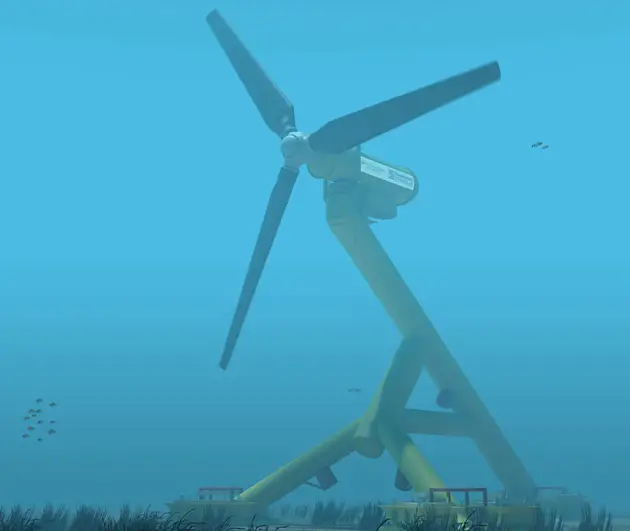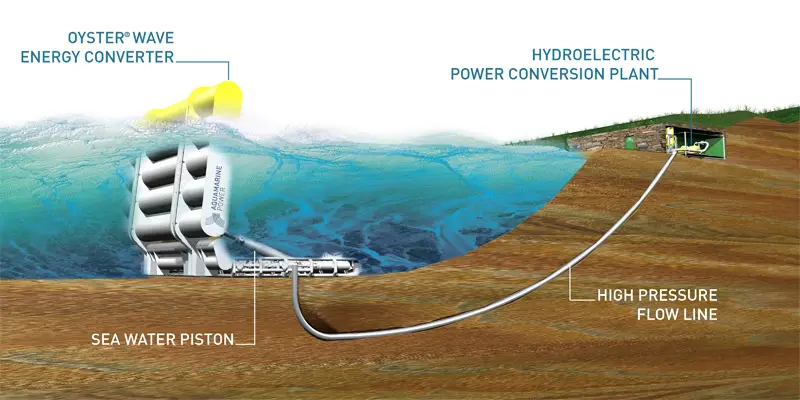
22nd August 2014 Tidal stream and wave power – slower than expected growth by 2020 Bloomberg New Energy Finance has revised down its forecasts for global tidal stream and wave power deployment in 2020 – by 11 percent and 72 percent respectively.
Global installations of tidal stream and wave power are set to grow to 148MW and 21MW respectively by 2020, from almost nothing today, according to new research from Bloomberg New Energy Finance, but these are still trifling amounts in the context of the world’s power system. The emergence of marine renewable energy technologies is taking longer than hoped, due to project setbacks, fatigue among venture capital investors, and the sheer difficulty of deploying devices in the harsh marine environment. This latest forecast represents a downward revision from the figures of 167MW for tidal stream and 74MW for wave that Bloomberg New Energy Finance published a year ago. Tidal stream power involves using machines resembling underwater wind turbines to convert the energy of the tides into electricity. Wave power involves the use of buoys, snakes, flaps and other devices to capture the energy of the waves. Engineers and entrepreneurs have been working hard on both for the last two decades, spending hundreds of millions of dollars.
Angus McCrone, senior analyst at Bloomberg New Energy Finance, said: “Governments in countries such as the UK, France, Australia and Canada have identified tidal and wave as large opportunities not just for clean power generation, but also for creating local jobs and building national technological expertise. That continues to be the case, and we will see further progress over the rest of this decade. But caution is necessary because taking devices from the small-scale demonstrator stage to the pre-commercial array stage is proving even more expensive and time-consuming than many companies – and their investors – expected.” The last 12 months have seen a number of wave power companies fail or falter. Oceanlinx and Wavebob went out of business, Wavegen was folded back into parent company Voith, AWS Ocean Energy scaled back its activities, and Ocean Power Technologies has cancelled two of its main projects. Other wave firms such as Aquamarine, Carnegie, Pelamis and Seabased have pressed on with device and project development. There have been clearer positives for tidal stream technology companies, with Andritz Hydro Hammerfest and Alstom/TGL both earning Renewable Obligation Certificates for electricity generated from devices at the European Marine Energy Centre in Orkney, Scotland, and Atlantis Resources raising £12m (US$20m) in an initial public offering on London’s AIM in February. However, the amount of marine energy capacity installed and generating consistently for a period of years remains tiny. There is only the 1.2MW SeaGen tidal stream device owned by Siemens/Marine Current Turbines in Strangford Lough, Northern Ireland, and a few small pilot wave power plants. Michael Liebreich, chairman of the advisory board at Bloomberg New Energy Finance, commented: “Tidal stream and wave power companies continue to face huge challenges. Although the potential is almost limitless, it’s a tough environment. It is possible to make equipment reliable, as the offshore oil and gas industry has shown, but it’s not cheap. And you have to put a huge amount of steel and concrete into the water, which is inherently expensive. It is still unclear whether this can be done at a cost competitive with offshore wind, let alone other clean energy generating technologies.”
Comments »
|








